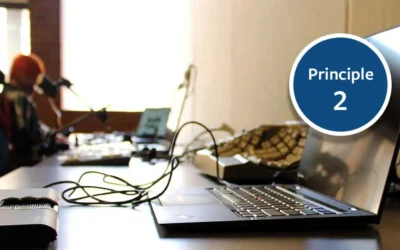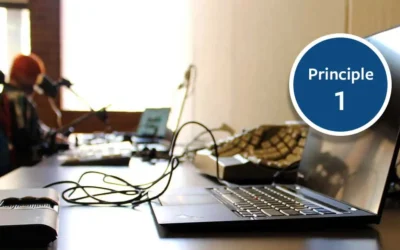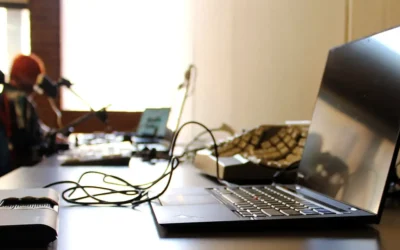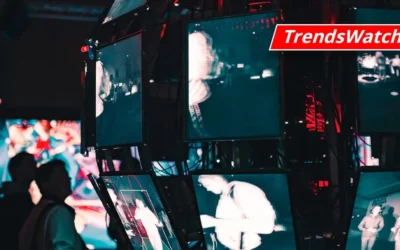Analysis of the US Stimulus Package and What’s in it for Museums

Rachael Cristine Woody
This package is far from perfect in many respects, and more aid will be needed as the pandemic crisis and its after-affects continue. As the museum industry is heavily impacted by this current crisis, it’s important for us to understand what this stimulus package covers and identify what we still need.
The Stimulus Package: What’s in it for Museums?
The Institute of Museum and Library Services (IMLS), the American Alliance of Museums (AAM), the National Council of Nonprofits, and the National Humanities Alliance have published press releases claiming a victory that the arts, culture, and nonprofit industries were included. However, what is not made clear in these releases is that the museum field received less than 5% of what it requested ($4-billion-dollars). To summarize, the stimulus package includes the National Endowment for Humanities, the National Endowment for the Arts, and the IMLS. Collectively, they will receive $200-million to distribute in the form of grants. Details are still pending as to how and when the money will be distributed from these agencies. There are indications that the application process will be simplified, reporting and matching requirements waived, and eligibility requirements will be broadened, but no such details have been released as of this writing. Applying for federal grants is known for being quite difficult, especially for organizations who can’t afford grant professionals who know how to navigate the federal application system. The process will need to be greatly simplified in order to provide equitable access and ensure museum of all sizes can access the emergency relief funds they so desperately need.
The Stimulus Package: Nonprofit Support that Includes Museums
As many museums are also nonprofit organizations, they can apply for loans to help pay for employees, employee benefits, and operating costs. While it is a loan, there is a forgiveness component included—assuming certain eligibility requirements are met. Finally, a charitable giving provision was adopted for an above-the-line deduction up to $300 in cash donations. This isn’t a lot, especially for museums who depend on much larger donations, but it is at least something.
How Does it Compare to Other Countries?
As a point of comparison, Germany approved a €50-billion aid package ($54-billion in US dollars) with more substantial funds allocated to support artists and small cultural businesses. Additionally, social security is extended to freelancers for a period of 6-months. Germany’s culture minister, Monika Grütters, stated, “The cultural sector in particular is characterized by a high proportion of self-employed people who now have problems with their livelihoods.” To that end she continues, “[h]elp is coming as quickly and with as little bureaucracy as possible!” It is good to hear a government recognizing the importance of creating a streamlined and efficient process, but Artnet News has reported it’s heard from artists who assess the process as “highly bureaucratic,”. Artnet News notes there are “several forms to complete and over 60 pages of small print.”
As another point of comparison, England’s Arts Council announced £160 million ($190-million in US dollars) emergency relief package for the creative industries. Included in this package is a £20-million-dollar line to help protect individual artists and freelancers. England’s response isn’t free from criticism; artists and organizations have stated that “the guidelines are confusing and the application process potentially obfuscating.”
How Can We Advocate for More Assistance?
When put together, these stimulus elements are viewed as a good start, but much more is needed to fully support museums as they navigate the long-term economic consequences of the coronavirus disaster. As AAM stated in their letter last week, “We estimate as many as 30 percent of museums, mostly in small and rural communities, will not re-open without significant and immediate emergency financial assistance.” This is still true unless more resources are provided. If your museum is struggling, it’s imperative you write your representatives.
Stay tuned for a future post on how to write an effective museum advocacy letter to your congressional representatives.

Rachael Cristine Woody
Consultant, author, and blogger Rachael Cristine Woody advises on museum strategies, collections management, grant writing and the future of museums for a wide variety of clients. Download your free copy of Rachael’s book from Lucidea Press, A Survivor’s Guide to Museum Grant Writing
Similar Posts
Museum Collections Online with Accessibility Principle 2: Operable
Compliance with WCAG Version 2.1 Principle 2: Operable
Museum Collections Online with Accessibility Principle 1: Perceivable
Compliance with WCAG Version 2.1 Principle 1: Perceivable, affecting information published from museum CMS to an online portal; expert guidance
Accessibility Standards for Museum Collections Online
A museum’s compliance with the ADA Title II 2024 update has benefits for its online content and for the museum’s community of users.
Museum TrendsWatch 2024: Digital Twins and Doom Loops & Combatting the Loneliness Crisis
Digital Twins is the construction of a digital surrogate for a person, place, or thing—one of several new concepts and trends in the museum sector.




Leave a Comment
Comments are reviewed and must adhere to our comments policy.
0 Comments